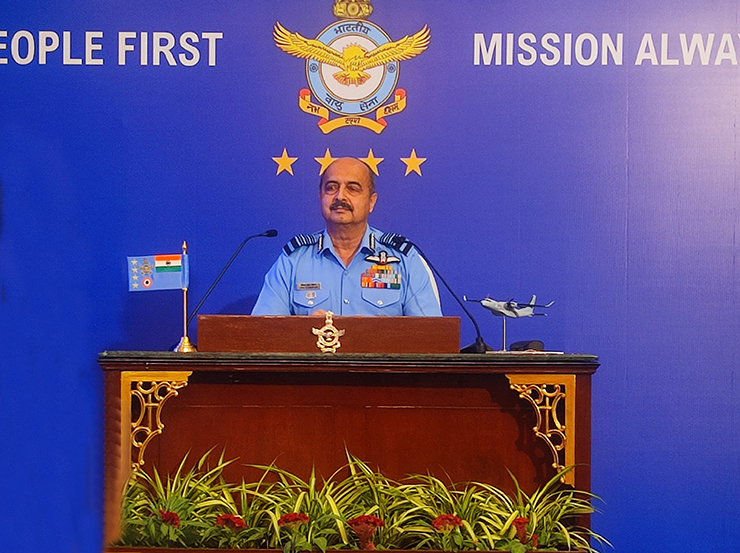
New Delhi: A strong and capable military is the need of the hour, said Air Chief Marshal V R Chaudhari at the annual press conference on October 3 ahead of the Air Force Day on October 8. The Indian Air Force (IAF) will continue to remain deployed along the frontier in the region till complete disengagement takes place in the remaining contested areas in eastern Ladakh, he said.
“The IAF is constantly reassessing the evolving and dynamic situation along the Line of Control (LAC) and is monitoring it, especially in eastern Ladakh. The IAF’s operational plans are very dynamic and it will deal with challenges along the Line of Actual Control (LAC) through better tactics and training in places where it cannot counter the “numbers or the might of the adversary,” the air chief said.
Detailing the steps being taken to bolster the Indian Air Force’s operational prowess, he said a contract to procure 97 Tejas Mark 1A aircraft at a cost of around Rs 1.15 lakh crore will be concluded soon. In February 2021, Defence Ministry sealed a Rs 48,000-crore deal with Hindustan Aeronautics Ltd to procure 83 such jets. The air chief said the IAF is looking at inducting military platforms, equipment and defence hardware worth Rs 2.5 lakh crore to Rs 3 lakh crore in the next seven-eight years.
The Air Chief Marshal stressed that the IAF closely monitors border situations through Intelligence, Surveillance, and Reconnaissance (ISR) methods, while addressing the issue of China’s increasing military infrastructure along the Line of Actual Control (LAC). IAF is paying close attention to the expansion of infrastructure and deployment of assets near the borders. The operational strategies of IAF are adaptable and change based on evolving circumstances, particularly along any disputed fronts.
With regards to the deployment of assets along the LAC, he said the focus of the IAF remains flexible rather than fixed. They maintain dynamic war plans that are regularly updated based on ISR data. The IAF is currently in the process of deploying mountain radars to enhance border surveillance. They will remain deployed until a complete disengagement occurs in the region, the air chief added.
Responding to a question related to the impact of the Russia-Ukraine conflict on the delivery of the S-400 Missile System, the Air Chief Marshal mentioned that they have received three units so far and expressed optimism about receiving the remaining two within a year. Furthermore, he highlighted the importance of the Indo-Pacific region, describing it as the new global economic and strategic centre of gravity. The Indian Air Force’s unique capabilities, including long-range reach and precision, are essential for addressing the challenges and opportunities in this region. Given the volatile geopolitical landscape, a strong and credible military has become imperative.
Acknowledging the rapid evolution of modern warfare due to technological advancements, the air chief mentioned that the IAF is actively investing in technology and undergoing a planned transformation. IAF’s focus includes AI-based decision tools, electronic warfare systems, robust networks, and leveraging space and cyber capabilities.
“Our focus is on force multipliers in the form of AI (artificial intelligence)-based decision tools, electronic warfare equipment, robust networks and harnessing space and cyber capabilities. While adding newer and more potent equipment, platforms and weapons to our arsenal, we are also committed to Atmanirbhar Bharat and are contributing extensively towards enhancing indigenisation and defence production, fast-paced development and operationalisation of indigenous aerospace projects,” the Chief of Air Staff said.
“We have recently witnessed the induction of the first C-295 aircraft. The project is an important milestone in boosting our defence industry and will contribute immensely,” he said. He further emphasised that the key focus areas for the IAF are persistent surveillance capabilities, reducing the time from sensor to shooter, developing long-range precision weaponry, and enhancing multi-domain capabilities.








